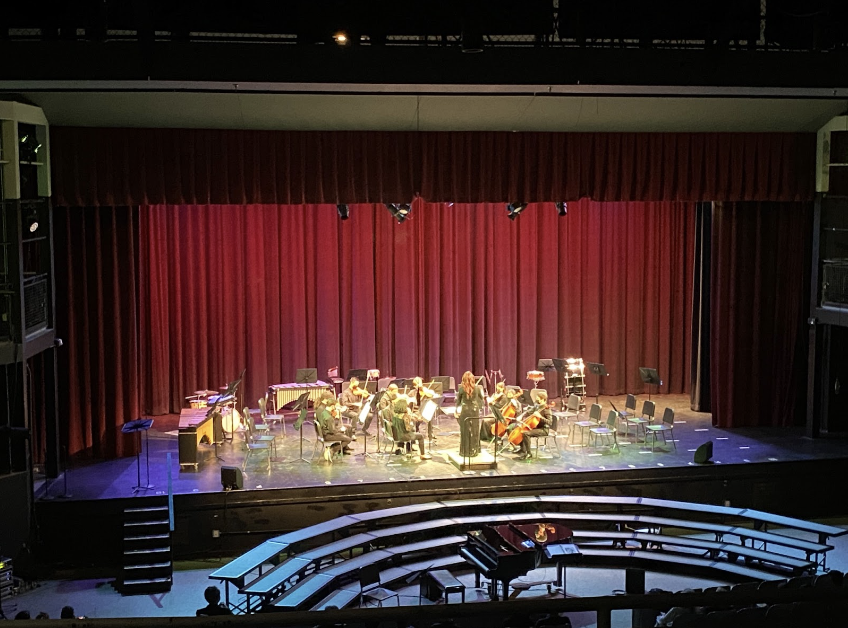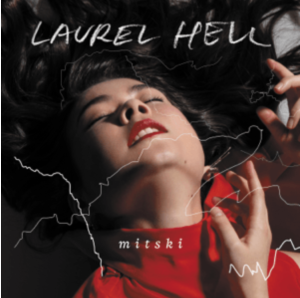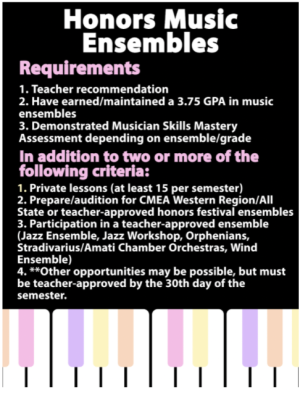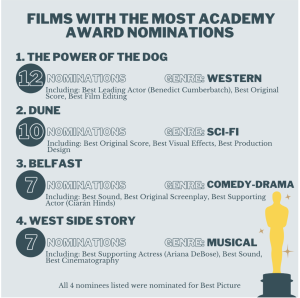An ode to classical music and its everlasting value
Photo taken by Julia Herlyn ’23
Classical music is a rich genre that is often overlooked by today’s youth—even within our own school community. At Staples, the Amati Chamber Orchestra (pictured) as well as the Stradivarius Chamber Orchestra receive little attention from administrators and students alike, reflecting the diminishing interest in classical music today.
Dua Lipa, Billie Eilish, Doja Cat, Drake and Kendrick Lamar, to name a few, are not among the artists that frequent my personal playlists, unlike the majority of my peers. Instead? I’m a diehard fan of Gustav Mahler, a self-proclaimed Ludwig van Beethoven enthusiast and a Sergei Rachmaninoff aficionado, not to mention my adoration of other composers, like Tchaikovsky, Sibelius and others. Upon sharing some of my favorite musicians—composers that were born almost 200 years ago—I’m often met with faces of confusion, ranging to amusement and even to sheer disbelief. Ultimately, the appreciation of classical music has been mostly lost on my generation, and is unjustly considered as too “boring” or “obsolete” today despite its worth, beauty and ageless relevance.
I’ve been studying the violin for almost eight years now. I started in fourth grade at Coleytown Elementary School, as all fourth graders were required to play in the orchestra and learn a string instrument. Perhaps somewhat due to my musical background (my mom was a classically-trained cellist), I immediately discovered a unique passion in playing the violin, and progressed by taking private lessons the following year and joining a local youth symphony shortly thereafter. Even at the age of 12 years old, I appreciated symphonies, quartets, sonatas and concertos. In the coming years, this passion would only grow more.
However, my story is uncommon. With each passing year, my in-school orchestras seem to dwindle in numbers, reflecting the waning interest in playing a string instrument within our student body. And this sentiment cannot only be seen in the decreasing enrollment within our music program—administrators and student forums such as the Facebook group “Superfans” also pay little attention to updating others on our concerts and accomplishments. In fact, this is a nationwide trend: as per Billboard/Nielsen, classical music had a 1% share of the sales market in 2019—ranked 12 out of 12 genres. Even though classical music only had a 3% share of the sales market a decade earlier (in 2009), which is still an alarmingly low statistic, interest in classical music overall has subsided even more since then. Why?
According to Dr. Colin Eatock, a contemporary composer, many young adults today feel that classical music is “dryly cerebral, lacking visceral or emotional appeal” and that “the melodies are insipid—and often there’s no real melody at all, just stretches of complicated sounding stuff.” Ironically though, many popular tunes today have sampled melodies from classical works. Take Billy Joel’s “This Night,” whose chorus is a swung variation of the second movement of Beethoven’s ‘Pathétique’ Sonata. The introduction of Lady Gaga’s “Alejandro” features Csárdás, a famous piece for violin by Vittorio Monti. In Maroon 5’s “Memories,” the predominant melody mimics that of Pachebel’s Canon in D, as discovered by Classic FM. Likely unbeknownst to many classical music skeptics, classical music is more prominent in our everyday lives (and personal tastes) than we may be aware of, and is actually a useful tool for the creation of more music—whether it be pop, rock, rap, R&B or anything else. Interestingly enough, the melodies that you may belt in the shower could very well be derived from classical pieces—even if you don’t consider yourself a steadfast “classical music fan.”
While I acknowledge that classical music may not be everyone’s go-to genre, and I respect alternate musical tastes, I take issue with the “boring” reputation classical music has gained. Even ignoring the richness of composition—including the melodic and harmonic progressions, the orchestration and the finer details like dynamics (the volume of the orchestra) and tempo (the speed at which an orchestra plays)—classical music has the remarkable ability to tell a story without words. Tchaikovsky’s “Romeo and Juliet Overture” encapsulates Shakespeare’s celebrated play, all within the span of 19 minutes. According to Liberty Park Music, Tchaikovsky’s use of different themes symbolizes key characters and events throughout the piece, such as the conflict between the Capulets and the Montagues, Friar Lawrence, Romeo and Juliet’s love and the battle between the families. The resurgence of the love theme, for example, amid developmental sections that characterize the battles between families, serves as a reminder of Romeo and Juliet’s passion throughout the play. Classical music has the incredible power to wordlessly tell beloved narratives, which, in my opinion, is not something to dismiss or scoff at as “boring.”
I encourage you to try listening to classical music, regardless of whether it is a four-movement, 40 minute-long symphony or a short piano sonatina. Even if you’re a bigger fan of Taylor Swift’s “Love Story” (another work inspired by Romeo and Juliet), rather than of Tchaikovsky’s version, what is most important is the mutual respect for all genres of music and understanding that they all are valuable, important and “instrumental” to society.

Editor-in-Chief Julia Herlyn ’23 enjoys music. She’s been playing violin for nine years both in school with the Symphonic Orchestra and Chamber Orchestra...




















































